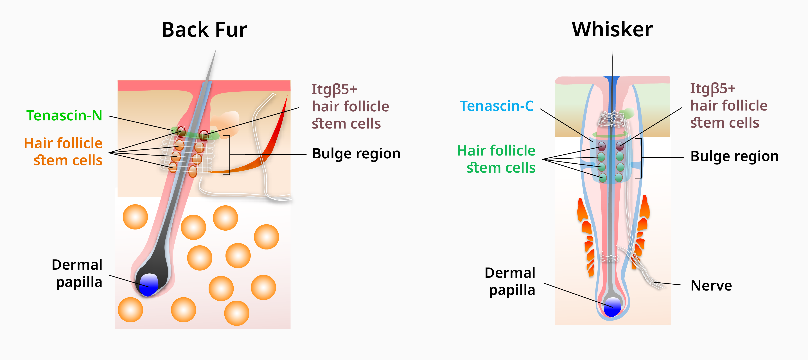

RIKEN建立了毛囊干细胞培养方法,可促进头发再生
瑞肯(RIKEN)
生命功能科学研究中心
器官指导研究小组
2月10日,建立了“在维持毛囊(构成毛发的器官)的再生能力的同时培养毛囊干细胞的方法”。
它还阐明了“长期和定期毛囊再生所需的干细胞”。
什么是毛囊上皮干细胞?
毛囊中有多个上皮干细胞。
它是哺乳动物一生中唯一再生的器官。
对于人类,头发每5至7年重复内卷和再生即可再生。
但是,实现周期性毛囊再生的机制尚不清楚。
应用于头发再生:
这项研究的结果可有助于干细胞生物学和发育生物学的研究。
大量的再生毛囊可以由少量的毛囊人工制造。
将来,有望将其应用于头发再生技术。
(Impress Watch)–Yahoo!新闻
https://news.yahoo.co.jp/articles/843796587c4f966dc52bfebf3d87867412429e52
上皮干细胞的扩增和鉴定可实现周期性毛囊再生
瑞肯(RIKEN)
生命功能科学研究中心器官诱导研究组
联合研究小组
建立了一种在保持毛囊再生能力的同时将毛囊干细胞体外扩增100倍以上的培养方法。
我们还阐明了长期定期毛囊再生所需的干细胞数量。
里肯
https://www.riken.jp/press/2021/20210210_3/
通过“毛囊”文化促进头发再生的动力| NHK关西新闻
https://www3.nhk.or.jp/kansai-news/20210210/2000041135.html
你会头发多吗? RIKEN与京瓷共同研发头发再生医学–ITmedia
https://www.itmedia.co.jp/business/articles/1607/13/news123.html
A recipe for cyclical regeneration of bioengineered hair
Researchers at the RIKEN Center for Biosystems Dynamics Research in Japan
have discovered a recipe for continuous cyclical regeneration of cultured hair follicles from hair follicle stem cells.
Scientists
have been making waves in recent years by developing ways to grow a variety of useful items in laboratories, from meat and diamonds to retinas and other organoids.
At the RIKEN Center for Biosystems Dynamics Research in Japan,
a team led by Takashi Tsuji
has been working on ways to regenerate lost hair from stem cells.
In an important step, a new study
identifies a critical population of hair follicle stem cells in the skin and a recipe for normal cyclical hair regeneration in the lab.
The researchers took fur and whisker cells from mice and cultured them in the laboratory with other biological “ingredients”.
They used 220 combinations of ingredients, and found that
combining a type of collagen with five factors — the NFFSE medium — led to the highest rate of stem cell amplification in the shortest period of time.
Hair growth in mammals
is a continuous cyclical process in which hair grows, falls out, and is grown again.
Growth occurs in the anagen phase and hair falls out in the telogen phase.
Thus, a successful hair-regeneration treatment must produce hair that recycles.
To test whether stem cells cultured in the NFFSE medium produce hair that cycles, the researchers
placed bioengineered hair follicle stem cells in NFFSE medium or in medium missing one of the ingredients and observed the regenerated hair for several weeks.
They found 81% of hair follicles generated in NFFSE medium went through at least three hair cycles and produced normal hair.
In contrast, 79% of follicles grown in the other medium produced only one hair cycle.
RIKEN
https://www.riken.jp/en/news_pubs/research_news/pr/2021/20210210_3/index.html